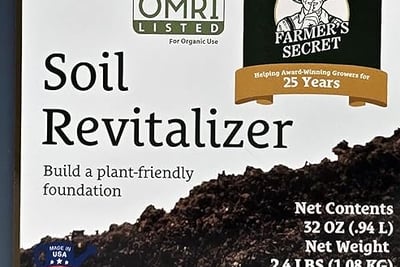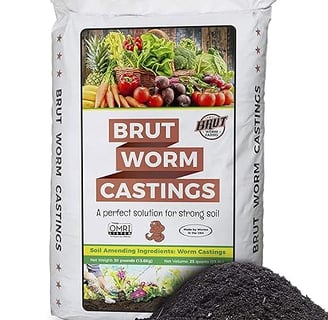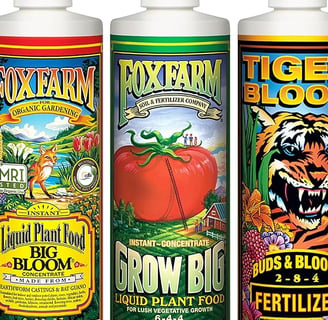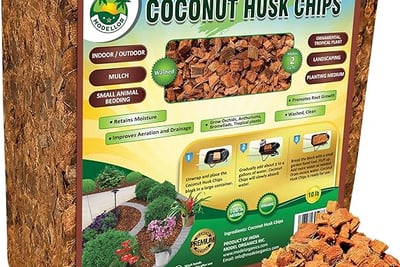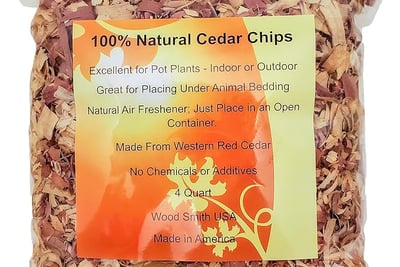Essential Spring Garden Chores for a Stress-Free Garden
8 min read


Understanding the Importance of Spring Chores
Spring is a crucial time for gardeners, marking the transition from the dormant winter months to a vibrant growing season. Engaging in essential spring gardening chores not only prepares the garden for the warmer months ahead but serves several vital purposes. One of the primary benefits is the prevention of pests and diseases. During winter, various pests may lay dormant in the soil or on plant debris. By thoroughly cleaning the garden, removing dead plants, and inspecting existing foliage, you can significantly reduce the risk of infestations that could harm your plants later in the season.
In addition to pest management, spring gardening chores facilitate healthy plant growth. This period is ideal for activities such as soil preparation, which can include aerating and enriching the soil with organic matter. Such practices enhance soil structure, increase nutrient availability, and improve drainage. This ensures that plants receive the necessary support for robust development, leading to a flourishing garden. Moreover, pruning perennials and deadheading flowers in the spring promotes new growth and encourages blooming, resulting in a more productive and visually appealing landscape.
Furthermore, engaging in these gardening chores enhances the overall aesthetics of your outdoor space. A well-tended garden in spring sets the stage for seasonal beauty. Tasks such as planting new flowers, establishing vegetable beds, and laying down mulch not only contribute to the health of the garden but also create an inviting atmosphere. The act of preparing one's garden for spring encourages a connection with nature, significantly improving the space's appearance and your personal enjoyment. By prioritizing essential spring chores, gardeners set a foundation for a thriving garden that yields long-term benefits.
Assessing Your Garden's Needs
As spring approaches, it is essential to assess your garden's needs thoroughly to ensure its successful revival and growth. Begin by evaluating the overall layout of your garden. Observe the areas that received ample sunlight and those that were shaded during the winter months. This observation will help you identify which plants may have struggled due to inadequate light exposure and which spaces might benefit from a redesign in plant placement.
Next, turn your focus to soil health. Conduct a soil test to determine its pH levels and nutrient content. Healthy soil is fundamental for plant growth, as it provides the necessary nutrients and supports root development. Look for signs of compaction or drainage issues, which can hinder plants’ ability to thrive. Amending the soil with organic materials like compost may be necessary to enrich its quality and encourage optimal plant health in the upcoming growing season.
Additionally, inspect the condition of your plants. Take note of any that appear damaged or diseased from winter weather. Look for discolored leaves, stunted growth, or signs of pests that may have taken refuge during the colder months. This assessment allows you to allocate resources efficiently, focusing on plants that require immediate attention versus those that may simply need a spring boost.
Weed growth is another critical aspect to consider during your assessment. Check for the presence of perennial weeds that may have become established over the winter. Removing these early will prevent them from competing for nutrients and moisture with your garden plants. By conducting a thorough evaluation of your garden's needs, you will be better equipped to create a targeted action plan that promotes a flourishing and beautiful outdoor space this season.
Soil Preparation and Amendments
The foundation of a thriving garden lies within the soil, making soil preparation a critical task for any gardening enthusiast. The health of the soil directly influences the overall productivity of plants. Therefore, assessing the soil health through various methods, particularly testing its pH levels and nutrient content, is essential. A simple soil test kit can provide valuable insights into the pH level, generally ranging between 6.0 and 7.5 for optimal plant growth. Too acidic or too alkaline soils can inhibit nutrient absorption, leading to weak and unproductive plants.
In addition to pH levels, understanding the nutrient content, including key elements like nitrogen, phosphorus, and potassium, is equally important. Once soil testing is complete, the next step is amending the soil to rectify any deficiencies and enhance its fertility. Organic amendments such as compost, well-rotted manure, or other organic matter significantly improve soil structure, moisture retention, and nutrient availability. Incorporating these amendments not only enriches the soil but also supports a diverse ecosystem of beneficial microorganisms vital for plant health.
Proper tilling and aeration are also crucial components in soil preparation. Tilling should be conducted when the soil is neither too wet nor too dry, as overly compacted soil restricts root growth and water movement. Aerating the soil helps it breathe, allowing roots to establish themselves effectively. This can be achieved through various methods, such as using a garden fork or a mechanical aerator, which breaks up compacted soil and promotes better nutrient absorption. Regularly inspecting and maintaining soil health is a fundamental aspect of a stress-free garden experience.
Planting and Transplanting Techniques
Spring is the optimal season for planting and transplanting various seeds and plants, as the warmer temperatures and increased daylight promote robust growth. Understanding the appropriate timing for planting specific seeds plays a crucial role in achieving a flourishing garden. For example, it is advisable to start sowing seeds indoors about six to eight weeks before the last frost, especially for heat-loving vegetables like tomatoes and peppers. Conversely, cool-season crops such as peas and spinach can be sown directly into the garden as soon as the soil can be worked, usually in early spring.
When considering transplantation, it is important to ensure that the root system of perennials, annuals, and vegetables is well-established. To transplant effectively, lift the plant from its original site carefully, taking care to preserve as many roots as possible. The new site should be chosen based on adequate sunlight, proper drainage, and spacing to prevent overcrowding. As a general guideline, it is recommended to space plants according to their mature size to avoid competition for nutrients and sunlight. For instance, larger plants may require more significant spacing than smaller varieties.
Watering is another critical factor in the planting and transplanting process. Newly planted seeds and transplants need consistent moisture, so it is essential to water them regularly during the initial establishment phase. A good rule of thumb is to ensure that the soil remains evenly moist but not overly saturated. Implementing a mulch layer around new plantings helps retain moisture and suppresses weed growth, further aiding in the successful establishment of the plants.
By following these strategies for planting and transplanting, gardeners can create a healthy and thriving spring garden that will yield bountiful results throughout the growing season.
Weed Management Strategies
Managing weeds effectively is a crucial component of maintaining a healthy and productive garden during the spring season. Weeds compete with your plants for vital nutrients, water, and sunlight, ultimately hindering their growth. By employing various weed management strategies, you can minimize their impact and promote a flourishing garden environment.
One of the most common and efficient techniques is mulching. Applying a layer of organic mulch, such as straw or wood chips, around your garden beds can significantly suppress weed growth. This enables your plants to access vital resources without the interference of competing vegetation. It is advisable to apply mulch to a depth of three to four inches, ensuring it is adequately distributed around plants while avoiding direct contact with their stems.
Hand-pulling is another effective method, especially in smaller areas or for more delicate weeds that may be difficult to treat with herbicides. It is best to perform this task after a rain when the soil is moist, as this makes it easier to pull out entire roots. Regularly scheduled hand-pulling sessions can significantly reduce the weed population in your garden.
For those looking for a more proactive approach, applying organic herbicides can be beneficial. These products target weeds while being more environmentally friendly than their chemical counterparts. They are particularly effective when applied during the early growth stages of weeds, offering a substantial advantage in controlling their spread.
Timing is also a vital factor in weed management. Early spring is the optimal time to address weeds as they begin to emerge. Establishing a routine that includes regular inspections and prompt action will help you develop a long-term weed control plan. By incorporating these strategies into your gardening practices, you can ensure that your plants thrive without the competition that weeds present.
Pest and Disease Prevention
As spring approaches, gardeners must be vigilant about the potential pests and diseases that could threaten their flourishing gardens. Common pests such as aphids, slugs, and caterpillars can quickly infest plants, leading to significant damage if left uncontrolled. Additionally, fungal diseases like powdery mildew and root rot can undermine plant health. Proactive management strategies are essential for maintaining a vibrant and healthy garden.
One effective way to prevent pest infestations is to regularly inspect plants for any early signs of trouble. Engaging in a thorough scouting routine will allow gardeners to catch potential threats before they escalate. Look for discolored leaves, webbing, or unusual growth patterns, as these can indicate the presence of pests or diseases. Early intervention can often mitigate damage, allowing plants to thrive.
Encouraging beneficial insects is another vital strategy for pest control. Insects such as ladybugs and lacewings are natural predators of many common garden pests. By creating a conducive environment for these allies—such as by planting pollinator-friendly flowers—you can establish a balanced ecosystem in your garden that reduces the need for chemical interventions.
In addition to promoting beneficial insects, implementing organic pest control methods can further safeguard your plants. Options such as neem oil, insecticidal soap, or diatomaceous earth provide effective tools without disrupting the natural balance of the garden. These methods not only deter pests but also minimize the risk of diseases spreading, as healthy plants are more resilient to infections.
Moreover, maintaining proper soil health through practices such as crop rotation and compost application can enhance plant vigor and reduce susceptibility to pests and diseases. A robust, well-nourished garden will create an environment where pests are less likely to thrive. By adopting these preventive measures, gardeners can enjoy a healthy, productive spring garden free from the stress of pest and disease issues.
Creating a Maintenance Schedule
Establishing a maintenance schedule is essential for ensuring your garden remains healthy and vibrant throughout the spring season. A well-structured plan not only outlines key tasks but also provides a roadmap for managing your gardening efforts effectively. By categorizing chores into weekly, monthly, and seasonal tasks, you can create a consistent routine that promotes a flourishing garden.
For weekly tasks, consider activities such as watering, weeding, and checking for pests. Regular watering schedules should be established, taking into account the specific needs of various plants, and adjusting for changes in weather conditions. In addition, weekly weeding is crucial to prevent invasive species from overtaking your carefully cultivated plants. Keeping a vigilant eye out for pests ensures that any infestations can be addressed promptly, preserving the health of your garden.
Monthly obligations might include fertilizing, pruning, and inspecting tools and equipment. Following the correct fertilization schedule provides plants with essential nutrients. Pruning not only helps shape your plants but also encourages robust growth. Moreover, maintaining your gardening tools is vital; ensuring they are clean and sharp will make your gardening tasks more efficient and enjoyable.
Seasonal tasks are equally important and can include preparing your soil, planting new seeds, and planning for seasonal transitions. At the beginning of spring, take the time to amend your soil with compost or organic material, which enhances its fertility and structure. Additionally, transitioning to new planting periods allows you to take full advantage of your garden's potential. By incorporating these seasonal, monthly, and weekly tasks into a comprehensive maintenance schedule, you establish a consistent approach to gardening.
Don't forget to integrate enjoyable gardening practices that fit your schedule, such as gardening with family or allocating time for quiet reflection among the plants. This will contribute to a stress-free gardening experience, ultimately leading to a more rewarding and fruitful endeavor.
